TEN THINGS ABOUT RACING IN THE MUD
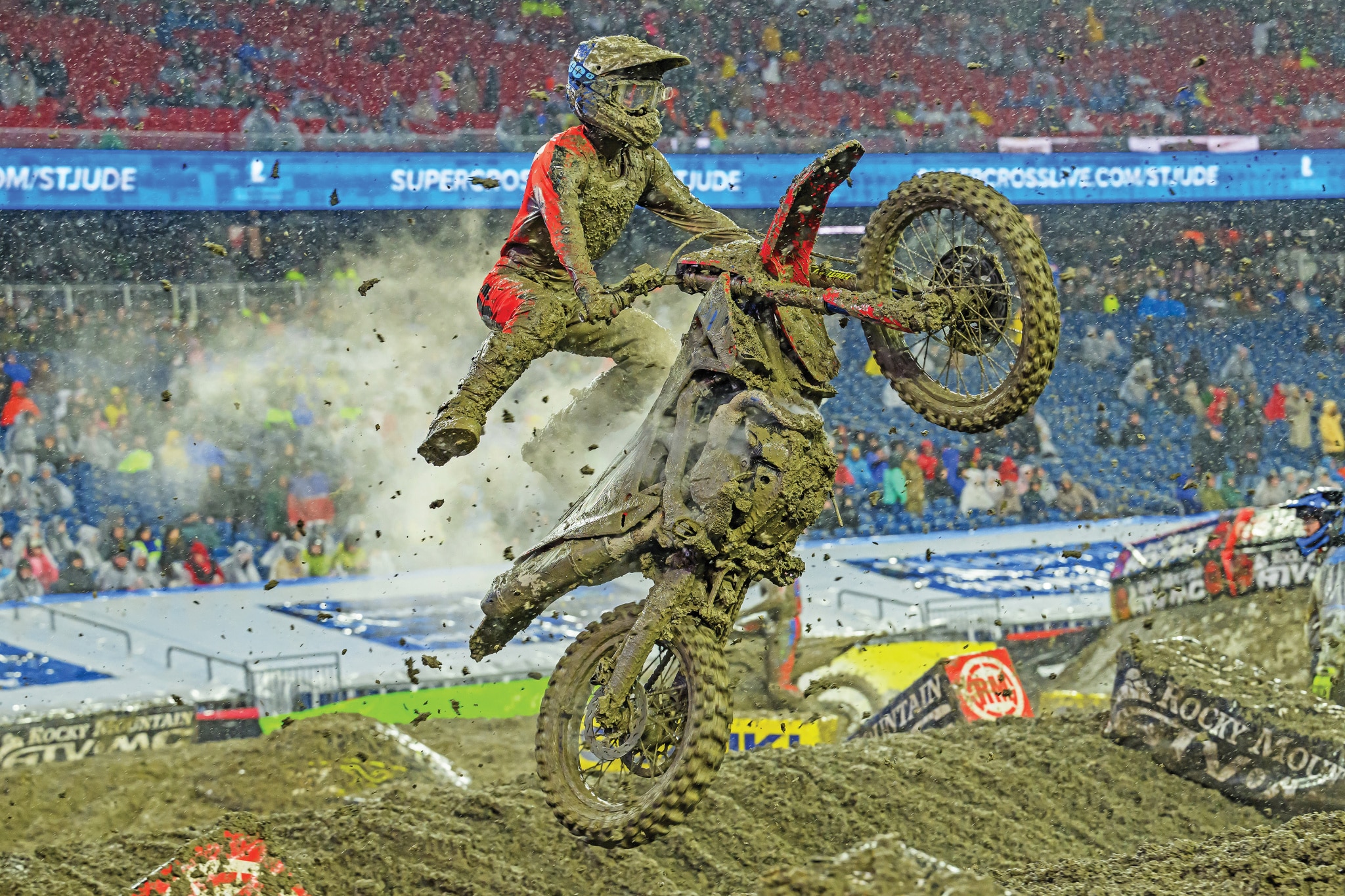
(1) Spray. Maxima’s SC1 silicone spray is traditionally called “new bike in a can” because it makes your plastics look new and shiny, but it’s also great for mud races. Use SC1 to coat underneath the fenders, the engine, and under your skid plate; however, be careful not to get it on your brake rotors, seat, side number plates or shrouds. It’s slippery, which is great for helping mud slide off your bike, but bad for your brake pads gripping the rotors or your legs gripping the bike.
(2) Foam. Foam is one popular material employed by the factory teams during mud races. Twin Air makes foam mud deflectors that stick to the top of your helmet to prevent mud from sticking and weighing your helmet down. Experienced mechanics also pack foam in any open area around the engine and brake pedal to prevent mud from packing in. 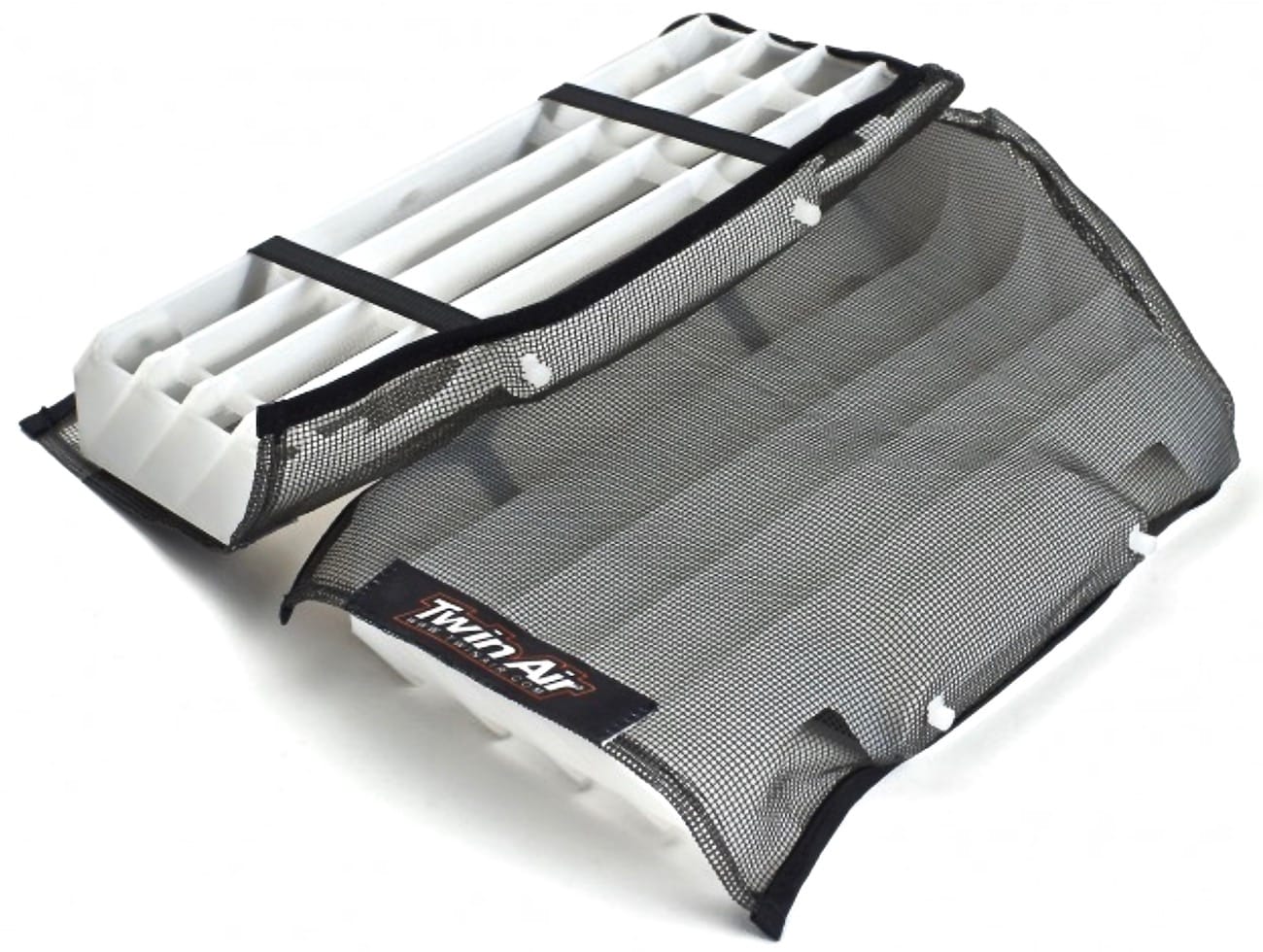 Twin Air radiator covers help keep the fins on your radiators clogged up with flying mud.
Twin Air radiator covers help keep the fins on your radiators clogged up with flying mud.
(3) Radiator skins. Keeping your engine cool is a top priority. Whether you’re racing in the mud or not, it’s a good idea to run radiator protectors. Once again, Twin Air has a solution with either mesh radiator sleeves or the more durable rubber composite radiator covers that use zip-ties to secure the radiators.
(4) Grip. Gripper seat covers are beneficial rain or shine, but the factory teams go overboard with grip for a mud race. The common difference is that they extend the normal pleats that sit on top of the cover down the sides of the seat for extra help holding onto a wet and muddy motorcycle. They also add more grip tape on the frame and shrouds.
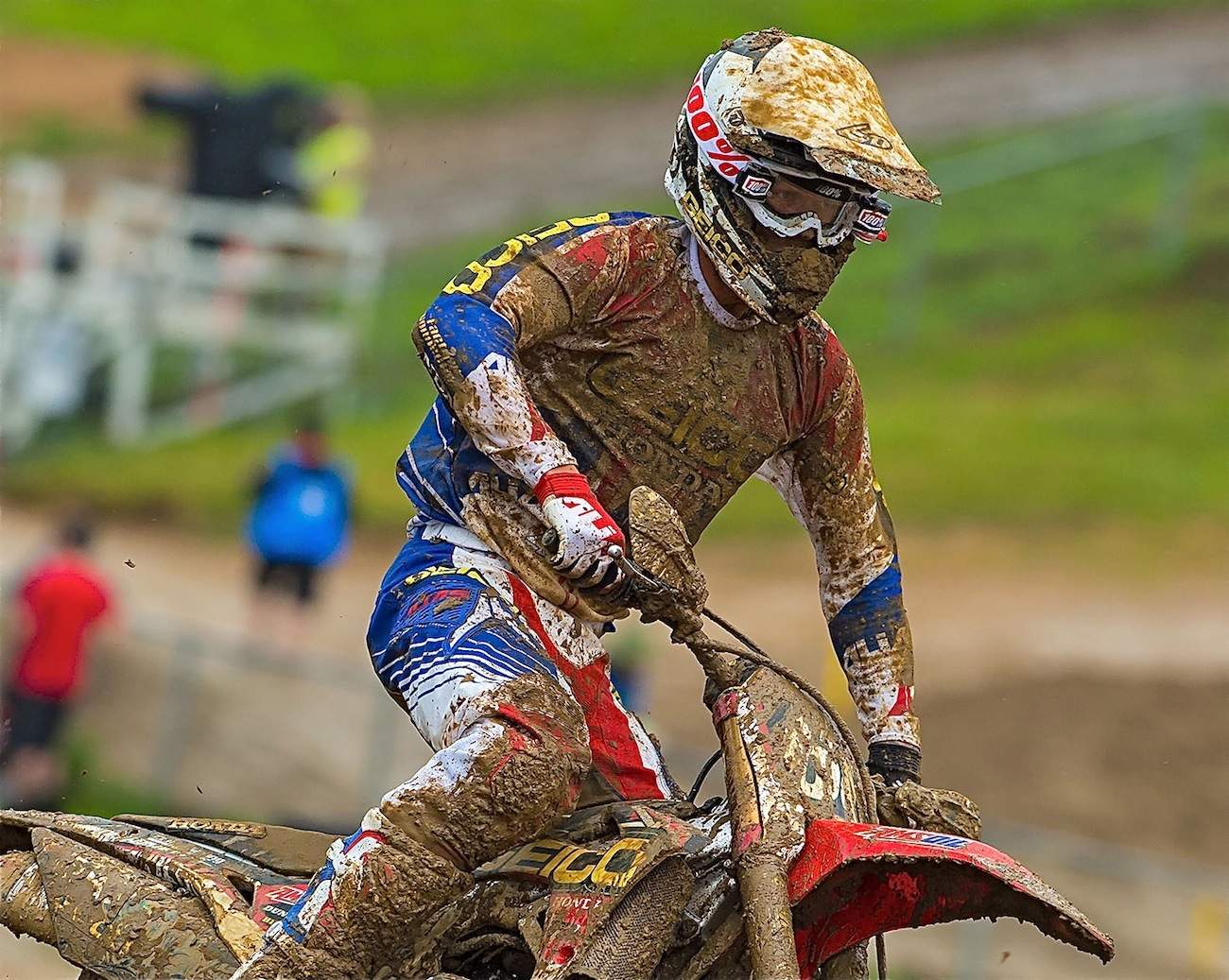 Extending your helmet’s visor by taping a goggle lens to the under-side of the stock visor, can help knock down roost.
Extending your helmet’s visor by taping a goggle lens to the under-side of the stock visor, can help knock down roost.
(5) Visor. One of the toughest aspects of a mud race is vision. The age-old trick for protecting your goggles from rain and mud is to tape an old goggle lens to the top of your helmet’s visor. It extends the protection your visor already offers, and it still allows you to see the track. Some companies, like 6D Helmets, make clear visor extenders. Every new 6D ATR-3 comes with a free visor extender.
(6) Sticky tear-offs. The expensive new trend with goggles is perimeter-sealing tear-offs. First introduced by Scott Goggles for their sponsored pro riders around 2016–2017, perimeter-sealing tear-offs use a sticker to connect your stack of seven laminate tear-offs to your lens, ensuring no mud or water gets between the tear-offs and the lenses. It’s a game changer for mud racing, and it practically makes roll-off systems obsolete.
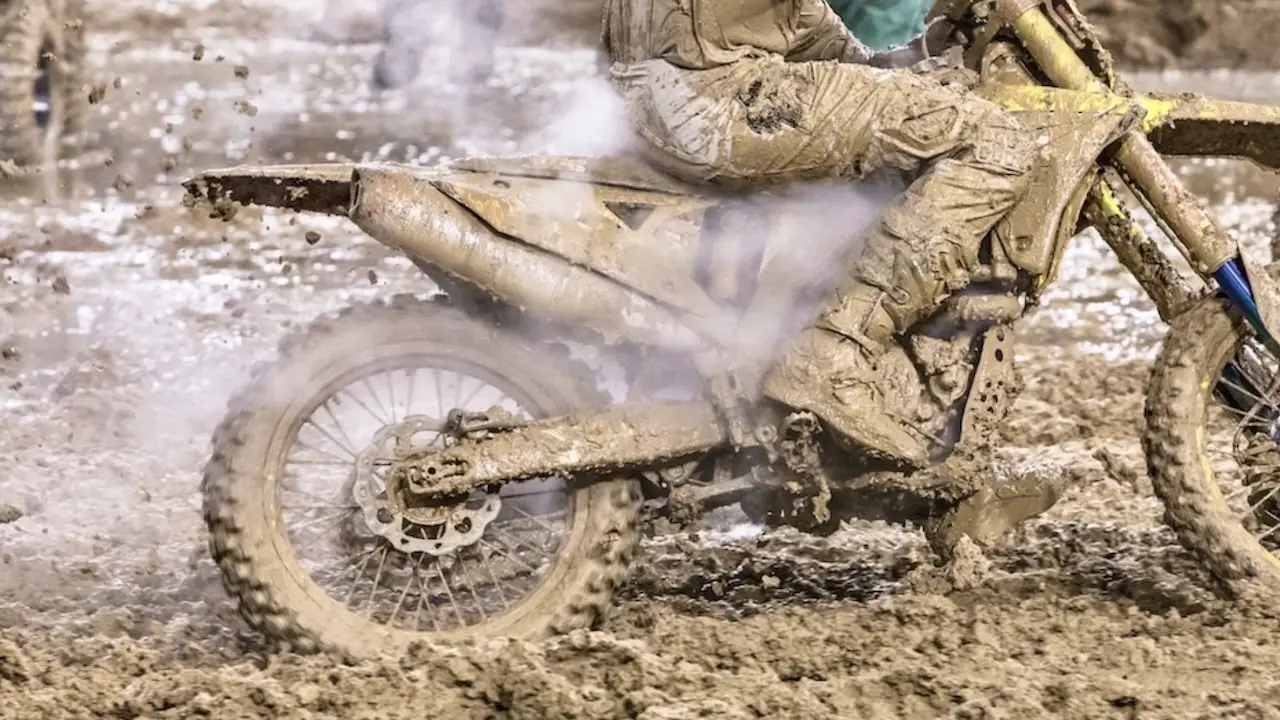 If you have the choice between seizing your engine or having it steam, choose steam because that means you still have water in your bike’s cooling system. Be afraid, be very afraid, when it stops steaming.
If you have the choice between seizing your engine or having it steam, choose steam because that means you still have water in your bike’s cooling system. Be afraid, be very afraid, when it stops steaming.
(7) Heat management. Keeping your bike cool is job number one to make it to the finish line in a mud race. When watching Supercross on TV, you can often see white steam pouring out of the engine’s overflow hose. TV announcers like to call it smoke, but that’s not the case. You can distinguish the two because steam dissipates very quickly, while smoke from the engine hangs in the air and leaves a white trail behind it. Steam isn’t necessarily bad. It’s an indicator that the bike is starting to overheat, but it also means your bike still has fluid in the radiators. Once it stops steaming, then you should be worried.
(8) Momentum and mindset. Momentum is your friend in a mud race. It helps you get through the soft sections without bogging down, which protects your engine by keeping strain off the clutch. Riding in the mud can be scary, but if you have a positive mindset, you can overcome even the muddiest terrain by looking ahead and keeping your speed up around the turns. Mud is the great equalizer in our sport, allowing many underdogs to get some time in the limelight.
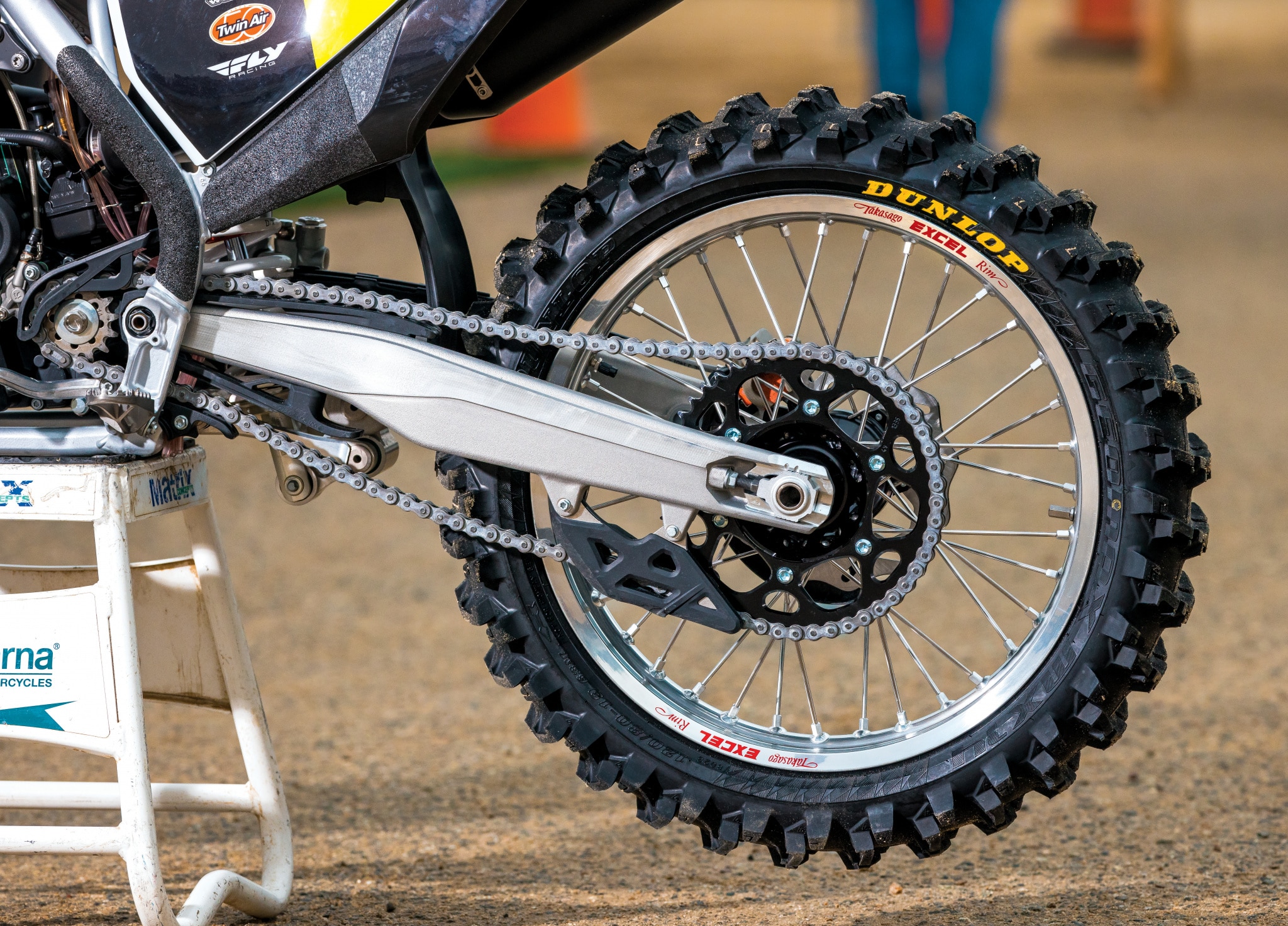 The Dunlop MX14 scoop tire on the rear can work in deep mud all the way into loamy intermediate dirt.
The Dunlop MX14 scoop tire on the rear can work in deep mud all the way into loamy intermediate dirt.
(9) Scoop tires. The Dunlop MX14 scoop tire was made for the mud. The MX14 is a rear tire only, usually paired with an MX34 soft/intermediate-terrain front. The scoop tire has a lower land-to-sea ratio (land being knobs and sea being the space between the knobs) than normal tires. More space between knobs, in addition to a stiffer rubber durometer, allows the knobs to dig into the mud and gain traction where an intermediate- or hard-terrain tire would be struggling.
(10) Protection. Acerbis makes rubber grommets that cover the hinge on your footpegs to keep mud from packing in. Acerbis also makes tire covers. These are only used by the top factory teams in Supercross who want to keep the mud out of their tires on their way to the starting line. Also, if you have a vented airbox cover, it’s a good idea to close the holes with a new cover or duct tape to prevent water from getting on your air filter.



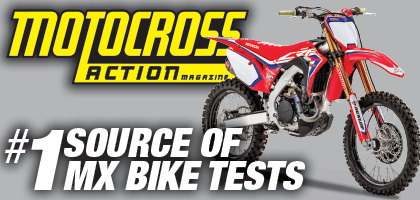


Comments are closed.